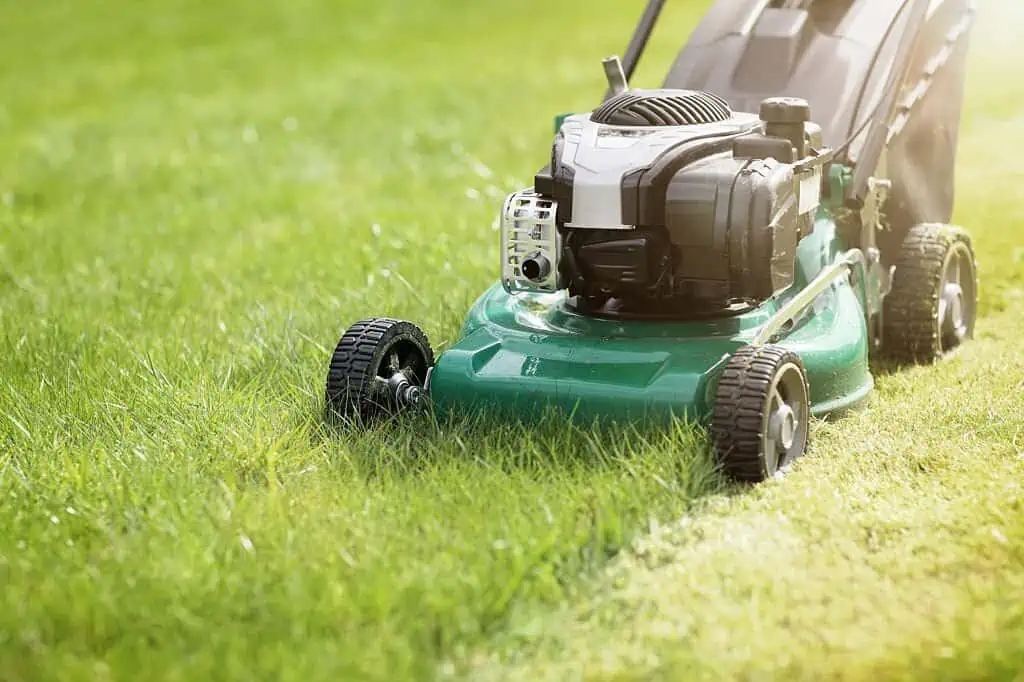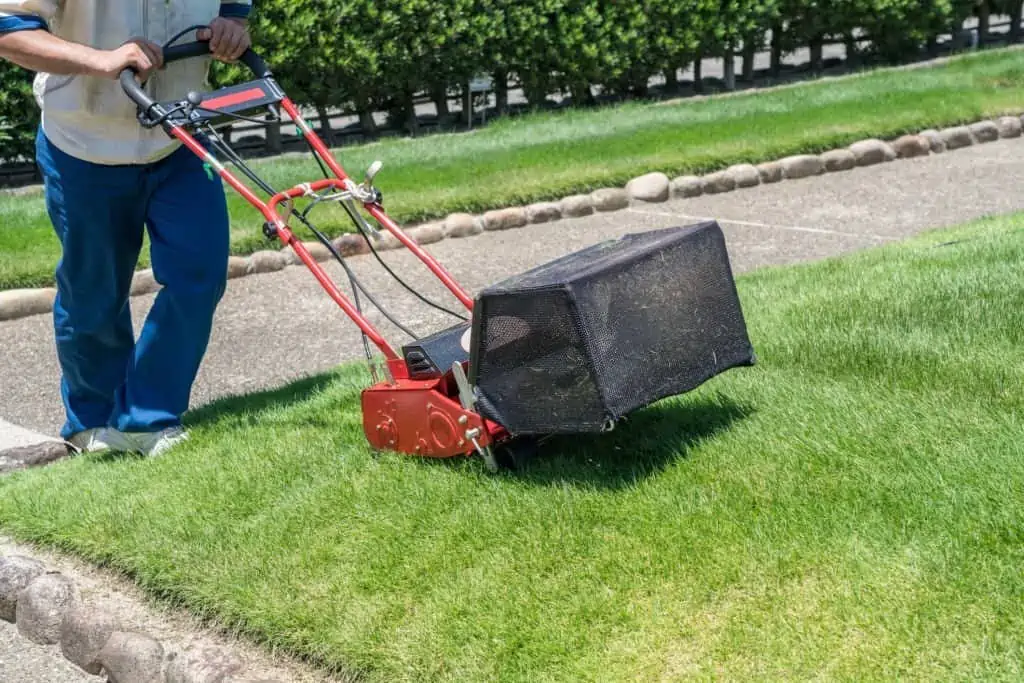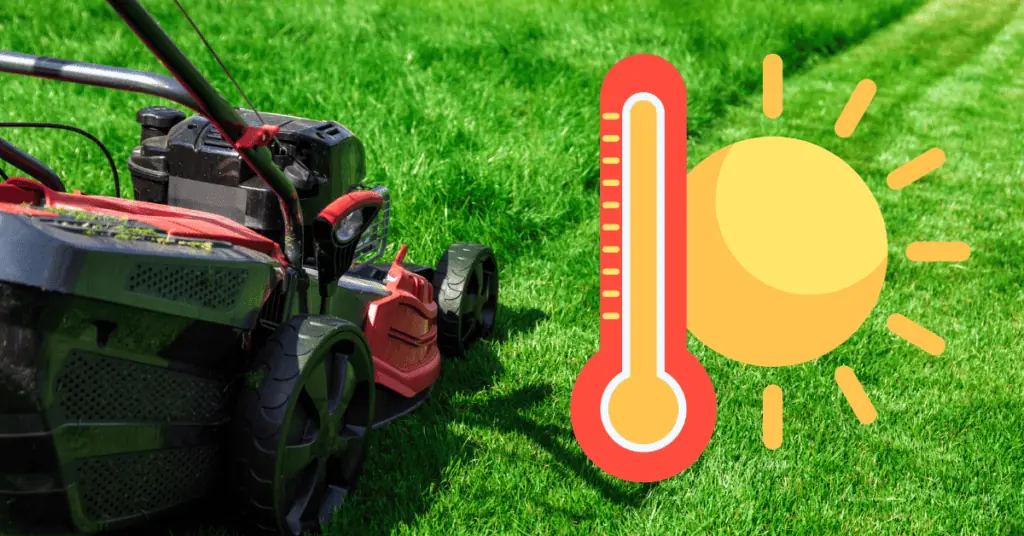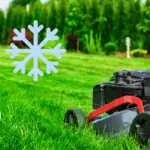Have you ever wondered whether hot temperatures affect mowing? Keeping your grass neatly trimmed during the hot summer can be quite difficult. While many believe that the hottest period of the day is the best time to mow and get the job done, this may not always be the case.
In truth, mowing the grass in extreme heat may be dangerous for both you and the lawn. This information is for everyone intending to keep their lawn in good condition and avoid heat-related health problems while mowing. You might be skeptical about how temperature affects mowing, but it’s critical to comprehend the science behind it.
In this article, the safest temperature range for mowing your lawn, as well as the risks of doing so in really hot weather, is talked about extensively. So, let’s get started and find out what temperature is too hot to mow grass.
Mowing Grass in High Temperature
Mowing your lawn is essential to keeping your outdoor space neat, but did you know there is an ideal temperature for mowing grass? If you wonder, “What temperature is too hot to mow grass?” this article will help answer that question.

Mowing grass in high temperatures is not recommended. When the temperature rises above 29.4°C, grass can become stressed and struggle to recover from mowing. Also, it can make the grass more susceptible to disease, pests, and other environmental stressors.
High temperatures can also cause the soil to dry out quickly, making it more difficult for the grass to absorb the water and nutrients it needs to thrive. Mowing can further harm grass by removing more moisture when the soil is dry.
Additionally, it can be risky to mow when it’s hot outside. Dehydration, heat stroke, and tiredness are all possible effects. Wearing breathable, light clothing, drinking plenty of water, and resting regularly in the shade are all necessary precautions.
Generally, it’s advisable to avoid mowing the lawn when it’s too hot. Instead, think of mowing it in the early morning or late afternoon when it is cooler outside, and the grass has had time to absorb nutrients and water from the night before. As a result, your lawn will stay healthy and green all season long.
The Effects of Mowing Grass in High Temperature
Mowing grass in high temperatures can have a range of effects on the lawn and the person mowing it. This section discusses the impact of mowing grass in a hot climate.

When cut in a hot environment, grass may become stressed and more prone to injury. This is because the blades of grasses lose moisture quicker when the temperature is high and can become injured and dehydrated when cut. Brown patches and uneven growth patterns in the lawn may result from this.
Secondly, mowing in hot weather can be dangerous for the individual doing the labor, especially if they are not following the necessary safety procedures. Dehydration, heat exhaustion, or even heat stroke can result from the interaction of heat and physical activity.
These illnesses can cause headaches, muscle spasms, disorientation, and dizziness, and to reduce these dangers, taking breaks and drinking enough water while mowing in hot weather is critical.
Grass cutting in hot weather can also affect the environment. Gas-powered lawnmowers release dangerous pollutants into the air, and using them in hot weather can worsen the problem. These pollutants have the potential to harm the health of nearby people and animals as well as contribute to poor air quality.
The Ideal Temperature to Mow Your Grass
Let’s talk about the appropriate temperature range for mowing the lawn now that we know the temperatures that are either too hot or too cool for this task. The ideal lawn-mowing temperature is from 15.6 to 26.7 degrees Celsius. Mowing in this range of temperatures prevents stress on the grass and allows the mower to cut the blades without harm.
Insufficient warmth causes the grass to stiffen and become challenging to cut. The mower blades may suffer damage as they struggle to cut the grass blades. In these circumstances, cutting the grass can result in the grass dying or turning brown. Conversely, cutting the grass when it’s too hot might seriously harm it.
If the temperature exceeds 29.4 degrees Celsius, the grass experiences heat stress. The grass blades will be too short after mowing under these circumstances, making them susceptible to disease and heat damage. Too short grass blades can’t adequately shade the soil, which causes water to evaporate and causes the grass to turn brown.
It can also harm the mower to mow the lawn when it’s too hot outside. The heat from the high temperature might harm the mower blades and cause the engine to overheat. High temperatures can also harm the mower’s tires, and the extra friction can cause the grass to tear.
It’s crucial to remember that depending on the type of grass, there may be a difference in the appropriate temperature range for cutting grass. At 15.6 to 23.9 degrees Celsius, cool-season grasses like fescue and Kentucky bluegrass flourish. Warm-season grasses like Bermuda grass and Zoysia grass thrive in temperatures between 23.9 and 32.2 degrees Celsius.
Tips for Mowing Grass in High Temperature
Although mowing the lawn in hot weather can be difficult, taking the right safety measures is possible. The following advice will help you cut your lawn in the heat:
- Mow in the Early Morning or Late Evening: In hot weather, early morning or late afternoon are the optimum times to cut your grass. Heatstroke and dehydration are less likely to occur during these periods because of the cooler temperatures and less solar exposure.
- Sharpen Your Blade: Your grass will be harmed by using a dull blade, resulting in browning, yellowing, and an unappealing lawn in general. A clean cut using a sharp blade will lower the chance of harm to the grass and encourage healthy development.
- Mow High: Raising the height of your mower blade is a good idea during hot temperatures. This will result in your grass storing more moisture, strengthening its defenses against heat stress and drought.
- Avoid Frequent Mowing: During hot temperatures, Overmowing can cause damage to your lawn. The stress it puts on the grass can make them more vulnerable to insects, illnesses, and drought.
- Leave the Clippings: After mowing your lawn in hot weather, leaving the clippings on the lawn is crucial. Grass clippings are a key source of nutrients and moisture for your lawn, and because they decay fast, they can help keep your lawn moist and provide nourishment.
Conclusion
Determining the appropriate temperature for mowing grass is essential to maintain a healthy lawn. Mowing grass in excessively high temperatures can damage the grass, leaving brown patches and a dull appearance.
For these reasons, mowing grass in the early morning or late evening is generally recommended for mild temperatures. This allows the grass to recover quickly from the stress of being cut.
Throughout the article, the factors determining the ideal temperature for mowing grass have been explored. How grass reacts to high temperatures and its effect on the lawn’s overall health have also been discussed. You can now identify the signs of heat stress in the grass and how to take preventative measures to maintain its health.
Now that you know this, you can take the necessary precautions to maintain your lawn and ensure its longevity. It is essential to monitor the temperature and humidity levels before mowing your lawn and avoid doing so when it is too hot outside.






